Ajanta Caves-The Spellbinding rock-cut Temple in Basaltic Rock
Ajanta Caves
Ajanta and Ellora are two monumental rock-cut caves that define Indian art and architecture. These two monuments are separated by a distance of approximately 100 km, but both are situated in the Aurangabad district of Maharashtra. While Ajanta is mostly about beautiful paintings made on cave walls on the theme of Buddhism, Ellora is all about sculptures that belong to three different religions-Buddhism, Hinduism and Jainism. The Ajanta Cave includes masterpiece paintings of Buddha and a story that depicts the life of Buddha. Ajanta consists of 30 caves of different sizes excavated in a horseshoe-shaped hill facing a narrow stream called Waghora. Each cave was connected to the stream by a series of steps, which are now destroyed. These caves are named after a nearby village Ajanta.
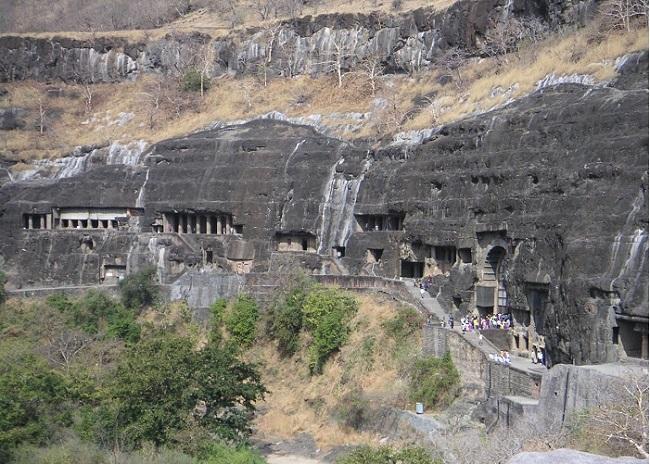
Ajanta Cave History
The caves remained hidden until the 17th century when a British officer accidentally discovered these caves while on a hunting tiger. However, Ajanta Caves have been mentioned in the memoirs of Chinese Buddhist travellers who came to India in the medieval era. The first cave to be discovered by British officer John Smith was the entrance to Cave 10. After their discovery, these caves were numbered from 1 to 29 but later more such caves were found in between the existing caves and they were numbered in Alphabetical order.
The excavation activity was carried out in two different phases separated by an interval of about four centuries. The first phase coincides with the rule of the Satavahana dynasty from about the 2nd century BCE to the 1st century BCE, while the second phase corresponds to the Vakataka dynasty in the 5th to 6th centuries CE. The cave that was carved out in the Satavahana period is influenced by Hinayana Buddhism. In the earlier period of Buddhism known as Hinayana Buddhism, spanning from Buddha’s lifetime to roughly 200 A.D. During the Vakataka dynasty that the second phase of cave carving was dominated by Mahayana Buddhism.
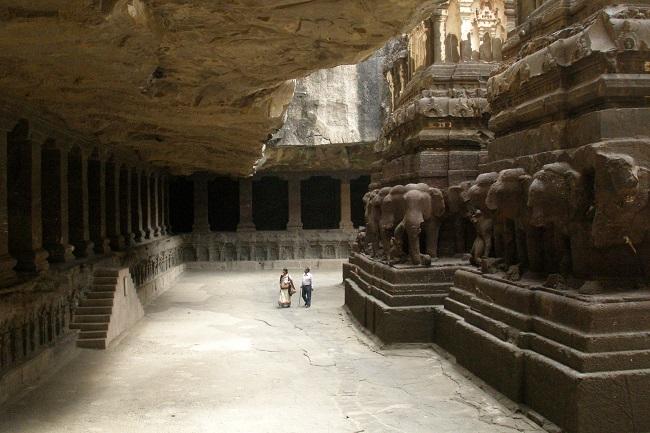
Buddhist monks Stayed in this serene place during the monsoon for deepening their religious quest through prayer and discussion. There were two types of cave-Vihara and Chaitya Griha. Viharas are monasteries used for living and prayer purposes. Vihar, have square halls with small cells along the sidewalls. These small cells were used by monks for rest and other activities while the central square space was for prayer. The Chaitya Grihas Cave, are hall used for prayers. The long tunnel-like caves have round pillars on both sides. At the end of the cave is placed the stupa, which is a symbol of Lord Buddha. Ajanta is a UNESCO World Heritage Site and a protected monument under the Archaeological Survey of India. Ajanta Caves in India are a must-visit place for any art and history lover.
The Ellora Caves
Ellora caves comprise 34 monasteries and temples. It is dug in the wall of a high basalt cliff and extends over more than 2 km. The caves were built during the 5th to 10th centuries. Ellora cave temples are devoted to Hindu, Buddhist and Jain. The Buddhist caves, the earliest structures, were created between the 5th and 8th centuries. These caves consist mostly of viharas or monasteries, which were large, multi-storeyed buildings. The most famous Buddhist cave is the Vishwakarma cave, popularly known as the Carpenter’s cave.
The Hindu caves were constructed between the middle of the 6th century to the end of the 8th century. These caves represent a different style of creativity and complexity that they required several generations to complete. It is also a UNESCO World Heritage Site. Out of the 100 caves at Ellora, 34 are open to the public. Cave number 16 is the largest single monolithic rock excavation not just in India but in the world. This cave is dedicated to Shiva, designed Mount Kailash, the abode of Lord Shiva. It looks like a freestanding, multi-storeyed temple complex. It is carved out of one single rock and alone took hundred years to be completed.
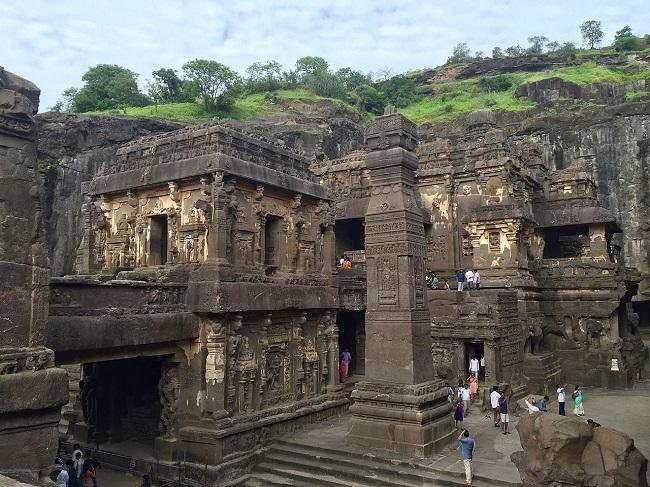
The Jain caves temple belongs to the last phase of construction at Ellora. These caves are smaller but contain detailed artwork. The beautifully carved pillars of the Indrasabha, the lotus on its ceiling, Chota Kailasha and the sculptures of Yakshini and Durga.
Read More- Joshua Tree Desert and National Park-Best Hiking Trail in the Mojave Desert
Geography and Geology
The caves at Ajanta are excavated out of a vertical cliff in Basalt rock above the left bank of the river Waghora in the hills of Ajanta. The caves are in the rocky northern wall of the U-shaped gorge of the river Waghur, in the Deccan plateau. Within the gorge are a number of waterfalls, audible from outside the caves in Monsson. The caves, cut into the face of a mountain, form a horseshoe shape around the Wangorah River. It is an example of one of India’s unique artistic traditions known as rock-cut temples. Each cave is filled with sculptures, wall murals, and ceiling paintings. Though much of this site has collapsed, what remains at Ajanta has allowed a glimpse into the artistic traditions of ancient India.
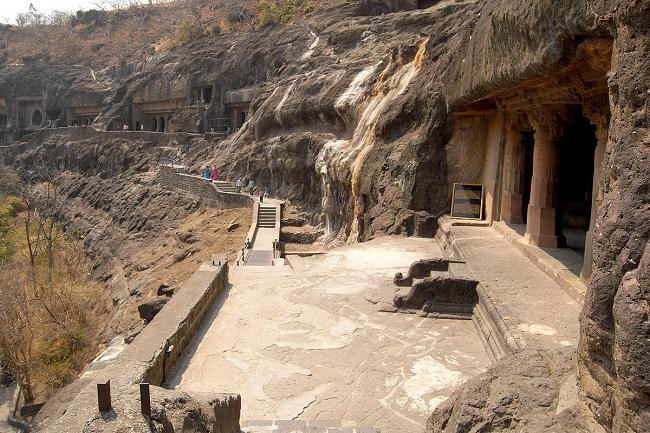
Attraction near Ajanta Caves
Daulatabad Fort
The fort was built by the Yadava dynasty in 1187 and was known as Deogiri. When Muhammad Tughlak ascended the Delhi throne, he took the fortress and decided to move his court and capital there, renaming it Daulatabad, “the City of Fortune”. He ordered the entire population of Delhi to move out to the new capital. The prominent structures within the fort complex include the Mahakot which comprises 4 distinct lines of walls with 54 bastions that surround the fort for a length of nearly 5 kilometres. Another interesting place is the Hathi Haud a gigantic water tank admeasuring 38 x 38 x 6.6 meters with a capacity of about 10,000 cubic meters. A 5-kilometre strong wall, artificial scarping and a complicated series of defences made Daulatabad Fort strong and secure. The 30-meter-high Chand Minar, a tower built much later with 3 circular balconies played a defensive and religious role in the Fortress.
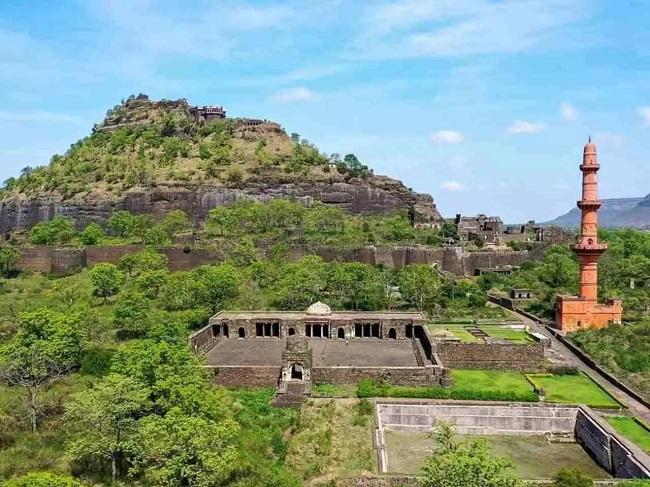
AURANGABAD CAVES
Aurangabad cave is situated at a distance of 5 km nestled amidst the hill. These are the 12 Buddhist caves dating back to 3 AD. The Tantric influence is evident in the iconography and architectural designs of the caves. The place is also treated to a panoramic view of the city as well as the imposing Maqbara from this point.
Panchakki
Panchakki is a 17th-century water mill situated at a distance of 1 km away from Aurangabad city. The water mill is famous for its underground water channel which traverses more than 8 km to its source away in the mountains. The channel makes a mesmerizing ‘artificial’ waterfall that powers the mill. The water channel is made up of earthen pipes finely lined up and at appropriate distances, masonry pillars are erected as natural suction pumps to make the water flow through the pipes with force through the distance of 8 Km. Finally, the water rises to a huge elevated masonry pillar from where it falls down into the main tank to make attractive Water Fall.
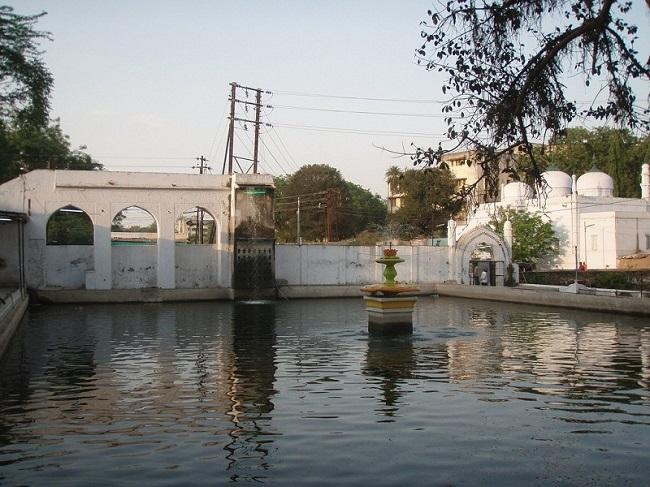
Bibi ka Maqbara
Bibi ka Maqbara has situated about 3 km from the city. It is the burial place of Aurangzeb’s wife, Rabia-and-Durrani. It is a replica of the Taj at Agra and due to its similar design, it is popularly known as the Mini Taj of the Deccan. The Maqbara stands in the middle of a spacious and formally planned Mughal garden with axial ponds, fountains, water channels and broad pathways.
How to Reach Ajanta Caves
Ajanta Caves in Aurangabad is well-connected by roads and is accessible from all major cities in the state like Mumbai, Pune, Nashik and Hyderabad. The nearest railhead to the Ajanta Cave is Jalgaon which is 59 km away from Ajanta Caves. Most trains halt here and you can take a taxi to reach the caves. The nearest airport to reach the caves is the Aurangabad Airport which is 99 km away from Ajanta. One can take a private Cab from outside the airport to head to the caves.
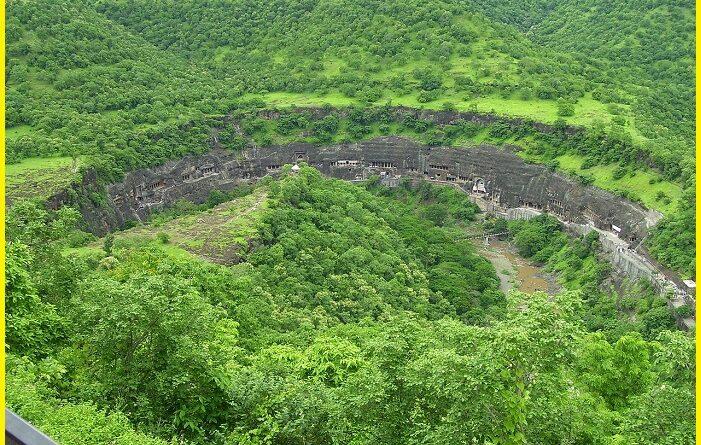
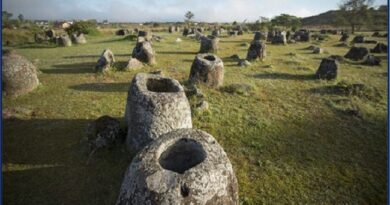

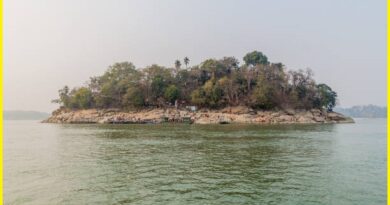
Pingback: A Most Beautiful waterfall near Chennai-Ubbalamudugu WaterFalls - Geotourism